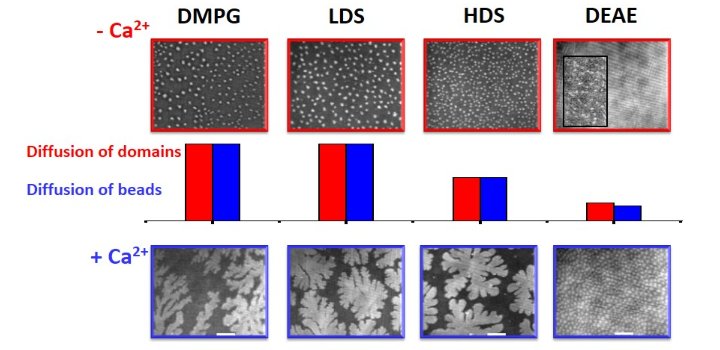CL camera & N Wilke, Chem. Phys. Lipids, 2017
Polysaccharides have been associated with various biological functions through their binding to membranes, but their specific role is still under debate. The aim of this work was to study the interaction of cationic and anionic polysaccharides with anionic and zwitterionic monolayers, at different subphase compositions, thus analyzing the influence of electrostatics on the interaction. The consequent effect of the polymer-lipid binding on the film properties was studied, with special interest in monolayer dynamics. The results indicate that electrostatic interactions play an important role in polymer-membrane affinity, and that the polymers formed a sub-layer, which increased the shear viscosity of the interface. The interacting polymer, even when it did not penetrate the lipid film, induced a polymer-like behavior of the monolayer regarding its dynamics: the whole film (polymer+lipid) became very viscous. As a consequence, the dynamic of the membrane was affected, thus inducing changes in the film topography, although the energetics for phase transition and the stability of each phase were modified slightly or not at all.
Authors: CL camera, N Wilke



